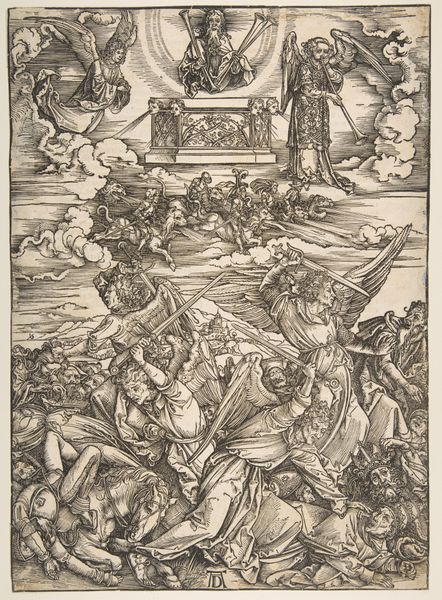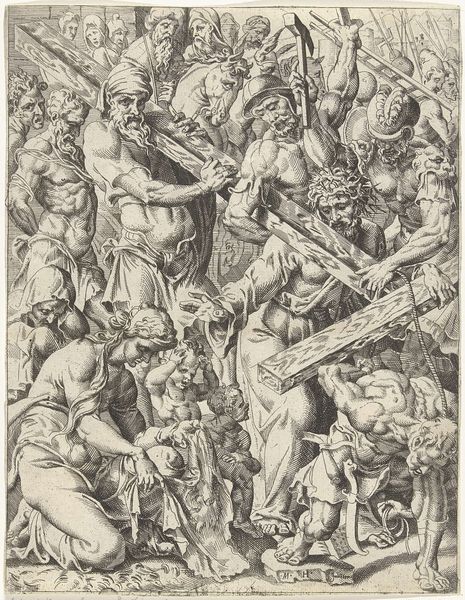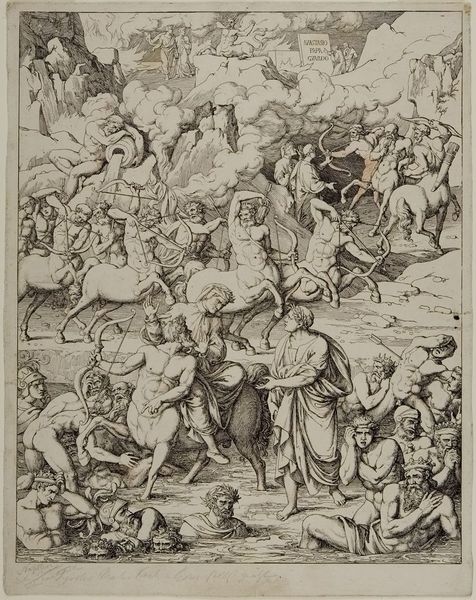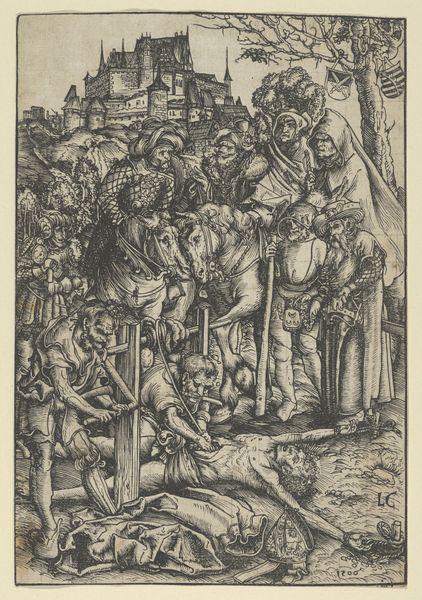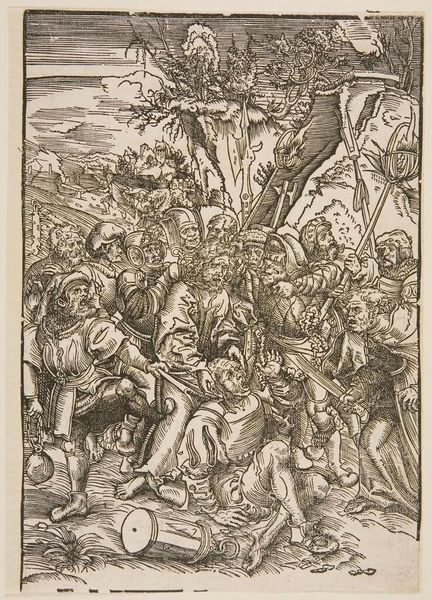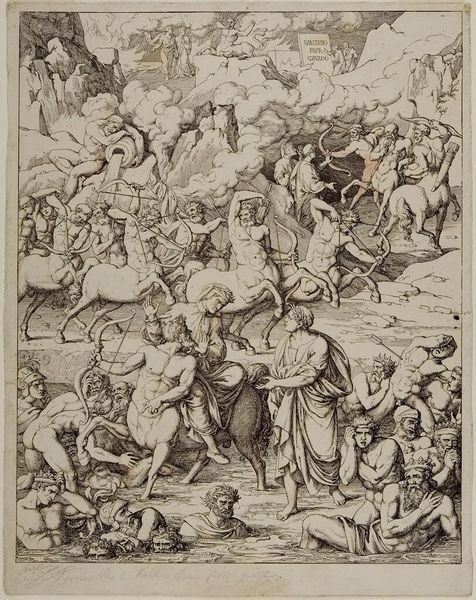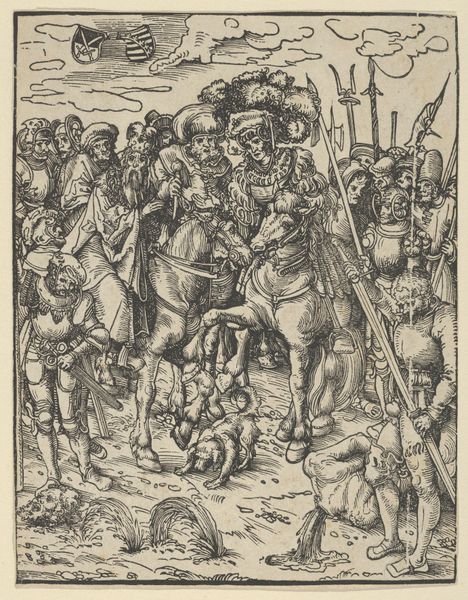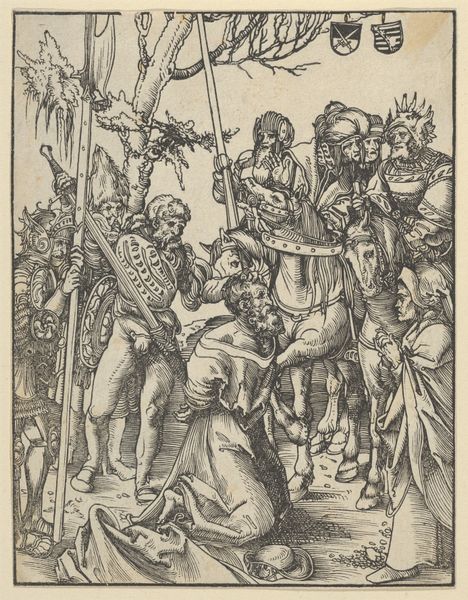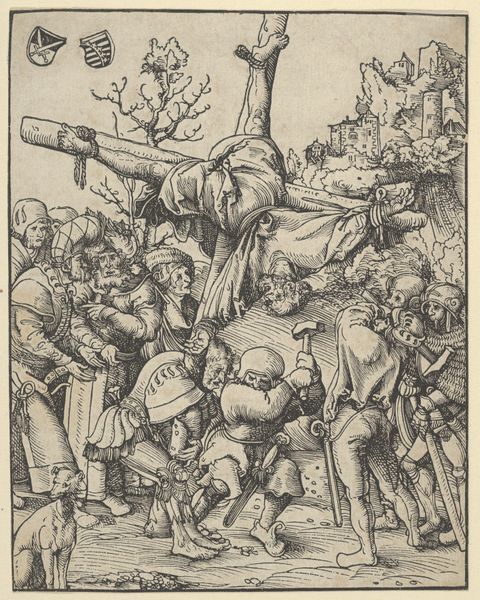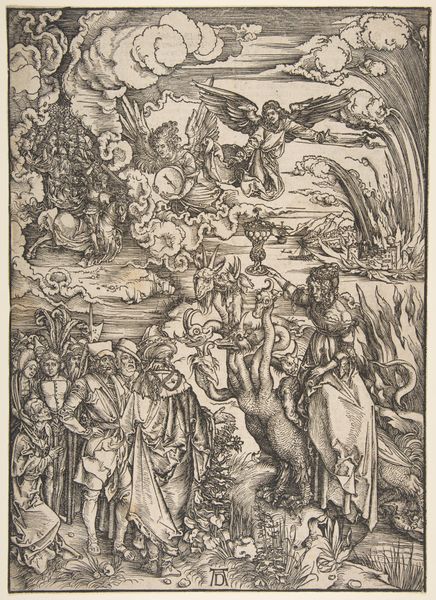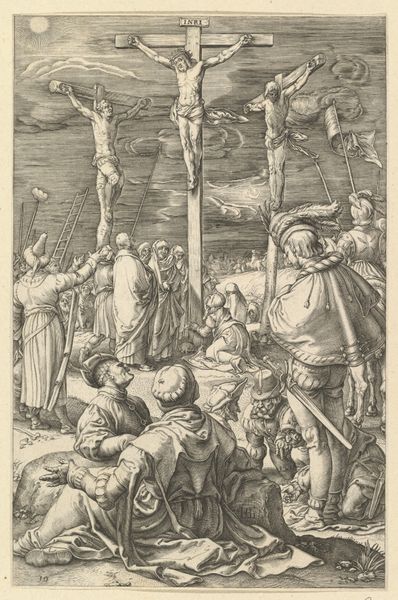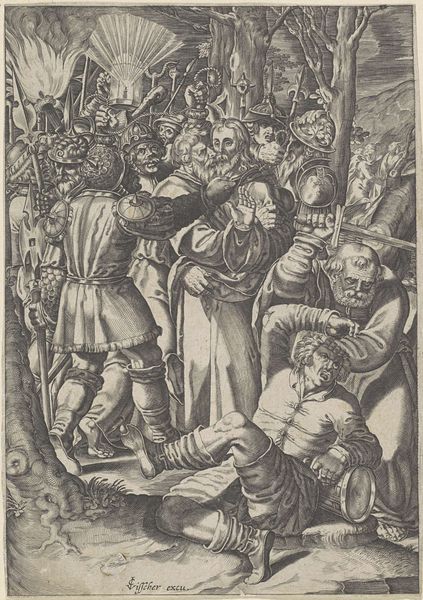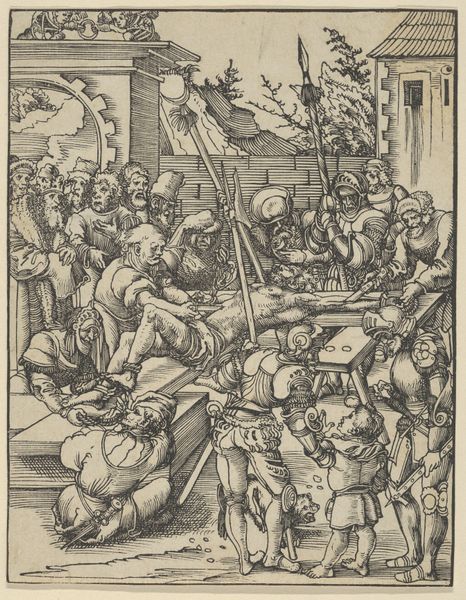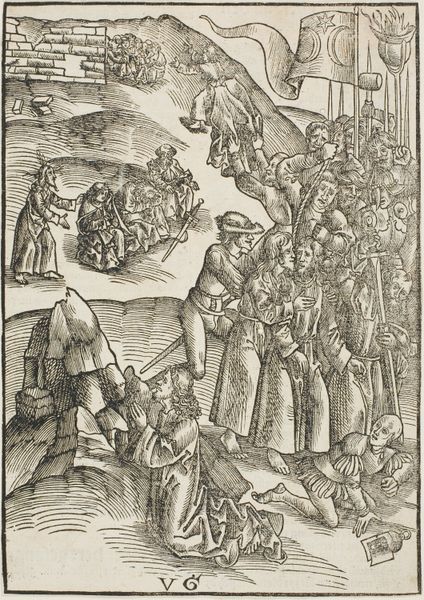
print, engraving
#
pen drawing
# print
#
figuration
#
history-painting
#
northern-renaissance
#
engraving
Copyright: National Gallery of Art: CC0 1.0
Editor: This engraving, "Christ Taken Captive," created by Lucas Cranach the Elder before 1509, depicts a really turbulent scene, full of figures. The cross-hatching is incredible, giving it such depth. What strikes me is how compressed and chaotic it feels, even on such a small scale. What's your interpretation of it? Curator: What I see is a fascinating example of how religious narratives were being re-imagined amidst social and political upheaval. Cranach was deeply embedded in the Reformation, and prints like this circulated widely. How do you think this accessibility impacted its message? Editor: That's interesting. I hadn't thought about the print's role in disseminating information. So, you’re suggesting it served almost as a form of propaganda during the Reformation? Curator: Precisely! Notice the expressive, almost caricatured features of Christ's captors. These weren't just objective depictions. Cranach used familiar visual language to influence public opinion, especially about religious authority. Also, what do you make of the figures in armor; what do they tell us about Cranach’s broader views of established powers and the Church? Editor: They definitely look imposing and aggressive. It's almost as if Cranach is portraying the captors as symbols of a corrupt power structure, actively working against divine justice. But why choose this moment of capture, rather than the crucifixion itself? Curator: Because the capture represents the abuse of legal authority, the perversion of justice by institutions. Cranach is not merely illustrating the Bible. He’s using it to critique the institutions of his own time. Knowing that Cranach himself was a local mayor makes one wonder even more about the target of his satire. Editor: That gives the image so much more depth. I was initially focused on the aesthetic, but understanding the historical and political context makes it a powerful statement. Thanks! Curator: Indeed! Considering the function of prints, thinking about his place in society, it truly underscores how art engages with social realities. It makes you wonder how many contemporary artworks reflect social contexts that will need unraveling by future historians!
Comments
No comments
Be the first to comment and join the conversation on the ultimate creative platform.
